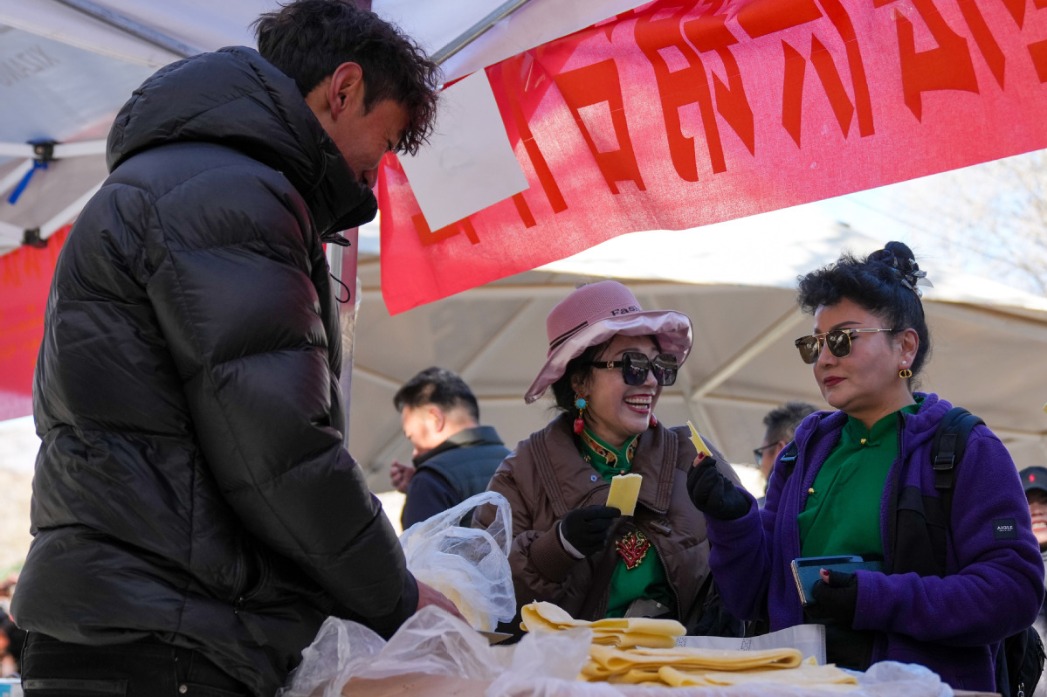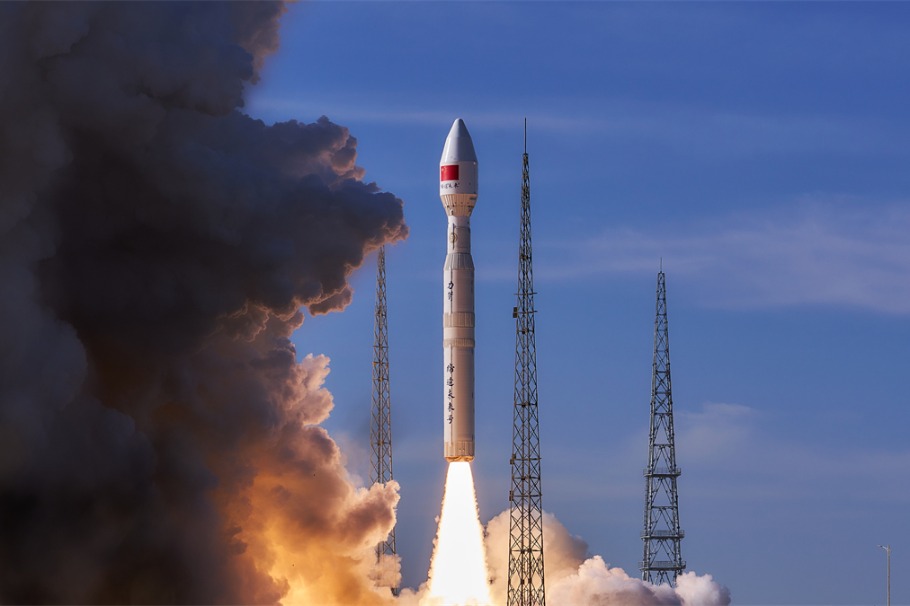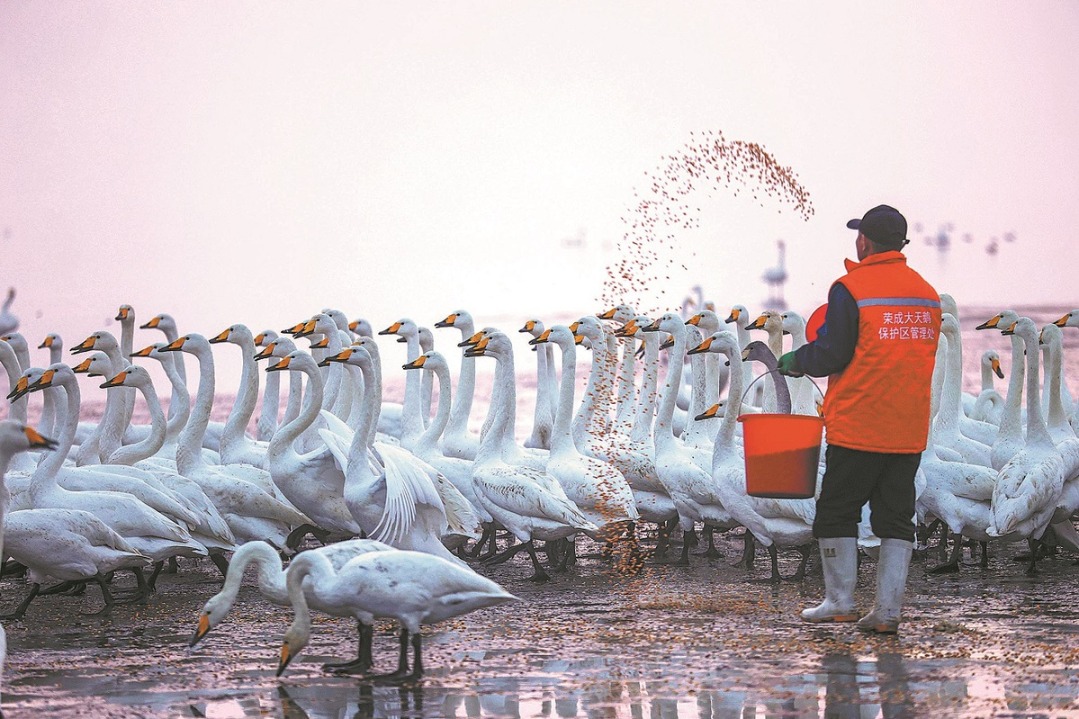Generous childcare subsidies rolled out across China in birth boost effort

BEIJING -- Generous childcare subsidies have been reported across China as part of the country's holistic efforts to boost birth rates, making news headlines and sparking heated discussions.
The latest news came from Hohhot, capital of North China's Inner Mongolia autonomous region. The city announced this week that it will offer a one-time subsidy of 10,000 yuan (about $1,394) to couples having their first child. A second child will receive 10,000 yuan per year until he/she reaches five years old.
For the third child or more, the annual subsidy is 10,000 yuan until the child turns 10, with the total amount reaching 100,000 yuan, a relatively high amount compared with other cities and roughly twice the annual income of local citizens.
Official statistics show that the per capita disposable income in Hohhot stood at 49,200 yuan in 2024. The generous cash reward is believed to become a relief for couples who are hesitant to have children due to financial concerns.
"The policy made us more assured in making our mind to having a second child. The subsidies can reduce the financial costs, especially for maternity and childcare," said Yang Lixin, 30, who works at a private firm in Hohhot and already has a five-year-old.
The policy came on the heels of the recent conclusion of the annual national legislative session, during which the government work report was adopted and, for the first time, vowed to "provide childcare subsidies."
"We will formulate policies on boosting birth rates, provide childcare subsidies, vigorously develop integrated nursery and childcare services, and increase public-interest childcare services," the report reads.
Also during the legislative session, Lei Haichao, director of the National Health Commission, said that the commission was working with relevant departments to draft a childcare subsidy operational plan, and the public would see direct, beneficiary measures and corresponding policy arrangements in due course.
The inclusion of childcare subsidies in the government work report signals China's commitment to supporting fertility intentions with tangible financial assistance, said political adviser Ni Bangwen. He called for further efforts to issue comprehensive measures to support childbearing families.
Local governments have put into action. More than 20 provincial-level regions in China had explored offering childcare subsidies at different levels, according to earlier data from the NHC.
For instance, Shenyang, the capital of Northeast China's Liaoning province, provided a monthly subsidy of 500 yuan to local families for their third child until the child turns three, according to a document issued in 2023.
Many Chinese people have expressed their expectation for such policies to be expanded to their hometowns. "Hope it can be spread across the country as soon as possible," a netizen from South China's Guangdong province commented.
The birth incentives have proved feasible and effective in Tianmen, a fifth-tier city with a population of 1.6 million in Hubei province. Since the city implemented birth-boosting measures, which include childbirth and childcare subsidies, housing rewards as well as maternal leave allowances, the number of newborns rose by 17 percent last year after declining for eight consecutive years.
As one of the world's most populous countries, China faces profound demographic challenges due to a dwindling number of newborns and a growing aging population. The country's birth rate and number of newborns both dropped for seven consecutive years before reporting rises in 2024, while the population aged 60 and above reached 310 million last year.
To boost its birth rate, China has implemented a slew of supportive policies in recent years. It phased out its one-child policy by allowing married couples to have two children in 2016 and announced support for couples looking to have a third child in 2021.
In addition to financial support, other incentive measures include increased childcare services, extended maternity leave, and strengthened support in education, housing and employment, all aimed at fostering a birth-friendly society.
Childcare services have been improved nationwide to create better situations for parents. In Suzhou, Jiangsu province, community-based childcare centers launched full-day care, half-day care, temporary care, and hourly care for infants and children, providing convenient and reliable childcare options for residents.
Moreover, maternity leave in China has been generally extended to over 158 days, along with spousal paternity leave and parental leave, making new mothers feel increasingly supported.
Longer maternity leave as well as additional spousal leave and parental leave could enhance family cohesion and alleviate caregiving burdens. Meanwhile, economic subsidies eased the financial pressure on families raising children, thereby boosting their willingness to have more children, said Mi Hong, director of the Institute for Population and Development Studies at Zhejiang University.
Providing childcare subsidies is also relevant to enterprises. "A significant portion of our key employees are of childbearing age. Childcare subsidies will help retain talent and enable the company's sustainable development," said Sheng Jing, the human resources chief of a data-tech company in North China's Tianjin municipality.
"Enterprises should provide heartfelt support to employees who raise children and explore a new way to balance working and child-rearing," said Wang Zhen, a lawmaker and entrepreneur of Inner Mongolia.
- Photographer captures wild mandarin ducks in Guizhou
- Infrared cameras and drones record Tarim red deer in Xinjiang
- Beijing issues alerts for snowstorms and road icing
- Beijing district recovers nearly 100 million yuan in scam losses
- China's immigration hotline adds French language support
- Zootopia 2 fans fuel hazardous trend in online snake purchases





































